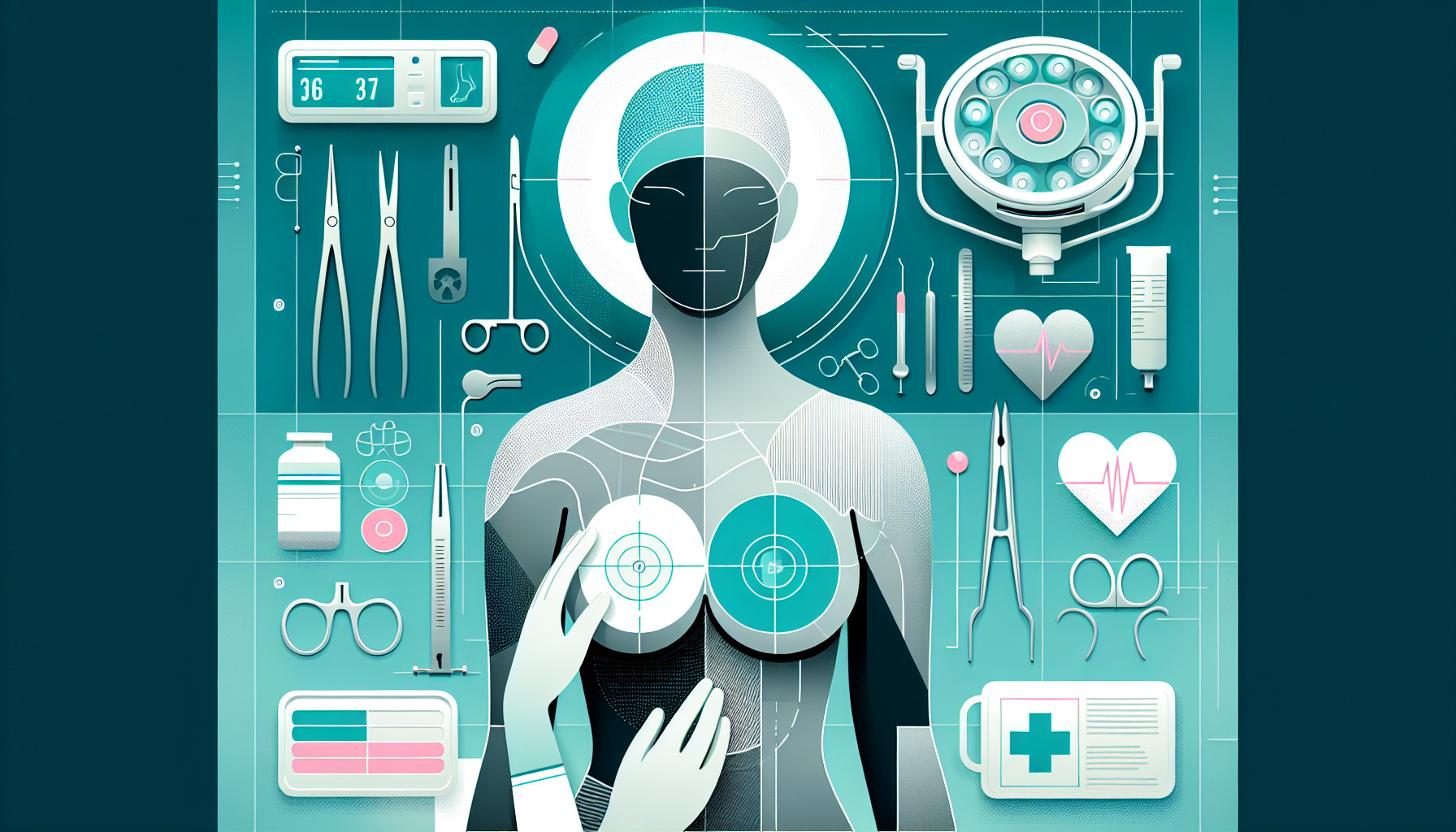Our Summary
This research paper reviews the use of acellular dermal matrices (ADMs) in breast reconstruction following breast cancer treatment. ADMs are materials used to support the body’s own tissues in healing and reconstruction. While this method has shown promising results, it’s also been associated with increased complications and higher costs. The paper explores various techniques of using ADMs in breast reconstruction and concludes that despite some reports of positive outcomes, there are also concerns due to the increased risk of complications and the cost difference in comparison to other non-ADM assisted reconstructive methods.
FAQs
- What are acellular dermal matrices (ADMs) and how are they used in breast reconstruction?
- What are the potential complications associated with the use of ADMs in breast reconstruction?
- How does the cost of using ADMs in breast reconstruction compare to other non-ADM assisted reconstructive methods?
Doctor’s Tip
One helpful tip a doctor might tell a patient about breast reconstruction using ADMs is to thoroughly discuss the risks and benefits of this method with their healthcare team. It’s important for patients to be well-informed about the potential complications and costs associated with ADMs, and to weigh these factors carefully before making a decision about their reconstruction options. Additionally, patients should follow their doctor’s post-operative care instructions closely to help minimize the risk of complications and ensure a successful outcome.
Suitable For
Patients who are typically recommended for breast reconstruction include those who have undergone mastectomy or lumpectomy for breast cancer treatment, as well as those who have a high risk of developing breast cancer and choose to undergo prophylactic mastectomy. Additionally, patients who have experienced trauma or deformities in the breast area may also be candidates for breast reconstruction.
It is important for patients to have realistic expectations and be in good overall health before undergoing breast reconstruction. Patients should also have a positive attitude towards the procedure and be willing to follow through with the necessary post-operative care and follow-up appointments.
Overall, the decision to undergo breast reconstruction is a personal one and should be made in consultation with a qualified plastic surgeon who can assess the individual patient’s needs and goals.
Timeline
Before breast reconstruction:
- Breast cancer diagnosis: The patient undergoes a mastectomy or lumpectomy to remove the cancerous tissue.
- Consultation with a plastic surgeon: The patient discusses options for breast reconstruction, including the use of ADMs.
- Pre-operative preparation: The patient may undergo additional tests and evaluations before the reconstruction surgery.
After breast reconstruction:
- Surgery: The plastic surgeon uses ADMs to support the reconstruction of the breast tissue.
- Recovery: The patient experiences a period of recovery, which may involve pain, swelling, and limitations on physical activity.
- Follow-up appointments: The patient attends regular appointments to monitor the healing process and address any complications.
- Long-term care: The patient continues to follow-up with medical professionals to ensure the success of the reconstruction and monitor for any long-term issues.
What to Ask Your Doctor
What are the different options for breast reconstruction using ADMs and how do they compare to other non-ADM assisted methods?
What are the potential risks and complications associated with using ADMs in breast reconstruction?
How will the use of ADMs impact the overall cost of my breast reconstruction surgery?
Are there any specific factors or medical conditions that would make me a better or worse candidate for breast reconstruction using ADMs?
What is the expected recovery time and outcome for breast reconstruction using ADMs compared to other methods?
How long do the results of breast reconstruction using ADMs typically last and are there any long-term considerations to be aware of?
Are there any additional follow-up procedures or maintenance required after undergoing breast reconstruction with ADMs?
Can you provide me with information or resources to help me better understand the use of ADMs in breast reconstruction and make an informed decision about my treatment options?
Reference
Authors: Cuomo R. Journal: Medicina (Kaunas). 2020 May 26;56(6):256. doi: 10.3390/medicina56060256. PMID: 32466619
